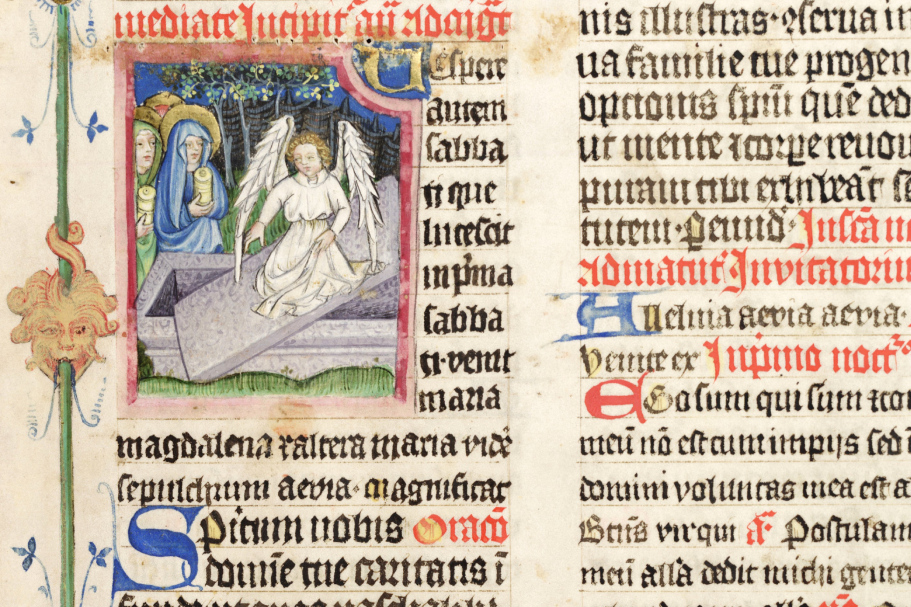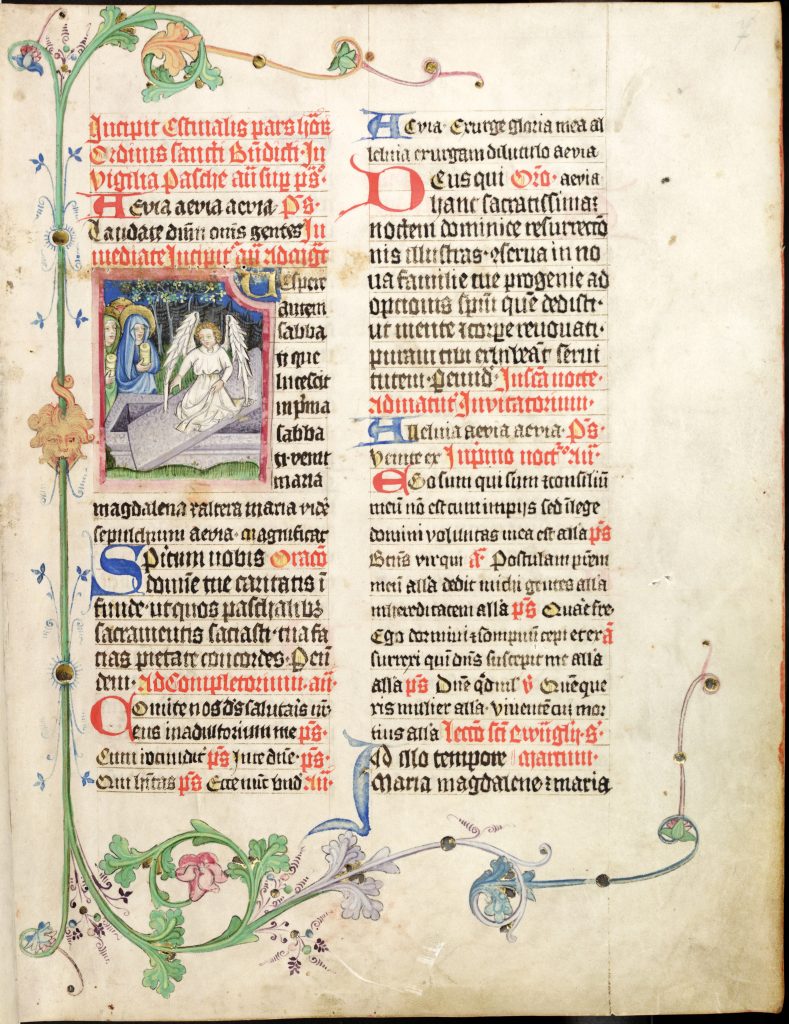Breviary of Unknown Benedictine Nun


Vespere autem sabbati quae lucescit in primam sabbati venit Maria Magdalena et altera Maria videre sepulcrum alleluia.
(After the Sabbath, at dawn on the first day of the week, Mary Magdalene and the other Mary went to look at the tomb.) Mt 28:1
This excerpt from the Gospel of Matthew opens one of the most remarkable breviaries in the Klementinum historical collections.
Document: [Breviarium monasterii s. Georgii] – Prague, National Library of the Czech Republic, XIII C 1a
Dating: 1st decade of the 15th century
To this day, it is unknown who commissioned the creation of the breviary. According to various features in the text and the chosen decoration, it was a woman, apparently a nun from the wealthy and significant St George’s Benedictine convent at Prague Castle. The large scale of the manuscript and the splendid decoration prove that it must have come from a wealthy family – the value of the codices produced in this way was considerable. The painted decoration, as well as the scribal execution, refer to the illuminator workshops in the circle of the court of the Czech king Wenceslaus IV (1361–1419). Small medallions depict individual zodiac animals, as well as typical activities for each month (for example, pig herding in December).
In the text itself, it is worth paying attention to the content of the popular Easter plays performed in St George’s Basilica by Benedictine nuns and priests as part of the Easter celebrations. Additionally, the depiction of St. Ludmila, who is buried in St George’s Basilica and whose cult was primarily developed in St George’s convent, is also worth noting.
The following generations of Benedictine nuns were also aware of the considerable importance of this manuscript, as evidenced by the younger, richly decorated binding from the beginning of the 17th century.Throughout the centuries, the breviary bears witness to the high cultural level of the nuns and their fondness for beautiful manuscripts. Moreover, the manuscript informs about the liturgical customs in St George’s convent. It also gives an idea of the beauty of the extensive library of the Benedictine monastery, which was recently successfully reconstructed.
Author of the text: Renáta Modráková


